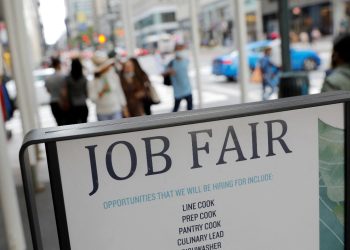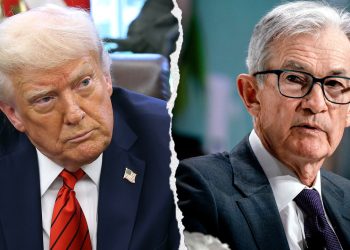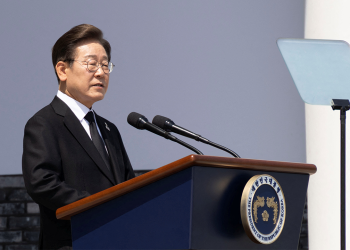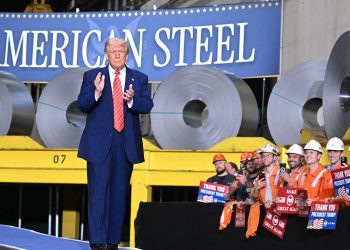By Leika Kihara
TOKYO (Reuters) -The Bank of Japan has stepped up its drum beat of hawkish comments over the past week, in a series of communications that insiders say is priming markets for an end to negative interest rates, which could happen in the first few months of next year.
The distinct change in BOJ commentary is a part of Governor Kazuo Ueda’s plan to dismantle the controversial monetary stimulus of his dovish predecessor Haruhiko Kuroda, which has been blamed for a host of issues including the yen’s sharp declines.
The hawkish tilt follows the BOJ’s decision last month to relax its cap on long-term rates by tweaking its yield curve control (YCC) policy and contrasts with the rhetoric of Ueda shortly after he took the helm this year, which seemed to call for a continuation of Kuroda-era stimulus.
Ueda last week said Japan was making progress in sustainably hitting the BOJ’s 2% inflation target, and that it won’t necessarily wait until real wages turn positive in phasing out stimulus. Three sources familiar with the bank’s thinking say the shift to a less dovish tone was intentional.
“The governor’s comments on inflation have been gradually changing over the past few months, which give a very good steer on the BOJ’s policy direction,” one of the sources said.
“The BOJ is probably in a phase now where it’s looking for the appropriate timing to raise interest rates,” another source said, a view echoed by a third source.
Ueda’s efforts to move Japan away from the extremely accommodative monetary settings of the part decade are complicated by risks that doing so too quickly could hurt a fragile economic recovery and trigger massive market upheaval.
However, with inflation continuing to overshoot the BOJ’s 2% target, the economic justification for a shift is gradually building.
Having watered down YCC at its last policy meeting, the BOJ’s next goal is to pull short-term rates out of negative territory early next year, sources have told Reuters.
REASONS FOR CHANGE
The BOJ has said next year’s spring wage talks between business and unions will be key to the timing of an exit. Many big firms typically settle pay around mid-March, which heightens the chance of a policy change in April.
But the BOJ does not necessarily need to wait for wage talks to conclude to tweak policy, as long as sustained achievement of its price goal can be foreseen, the sources say.
The bank’s nine-member board is also tilting more hawkish with some calling for the need to start phasing out massive stimulus and communicate the chance of a future exit from ultra-low rates, a summary of opinions at their October meeting showed.
“It’s natural to think the BOJ is starting to lay the groundwork for normalising policy,” said Mari Iwashita, chief market economist at Daiwa Securities and a veteran BOJ watcher.
More imminently, other data points for policy deliberations could come from the bank’s “tankan” business sentiment survey due on Dec. 13, a gathering of BOJ regional branch managers in early January, and comments from business and union executives on next year’s pay goals.
That leaves open the chance of an policy change in January, when the BOJ next reviews its quarterly price forecasts.
“It’s really a matter of conviction and certainty. In the end, it’s a judgment call,” one of the sources said.
Nearly 60% of economists polled by think tank Japan Center for Economic Research after the October policy tweak expect the BOJ to tighten policy in April, followed by 12% projecting a January move. Most expect an end to both YCC and negative rates.
LONG ROAD
The BOJ’s latest price projections released in October show inflation is expected to remain stubbornly above the bank’s target in the fiscal year ending March 2024, casting doubt on its view that recent cost-driven price rises are temporary.
Its current projection for “core-core” inflation, which strips away fresh food and fuel, is at 3.8%, up a hefty two percentage points from the January estimate.
“It’s an awfully big upgrade and shows how the BOJ had made estimates that were way too low,” said former BOJ top economist Hideo Hayakawa, who expects negative rates to end in April.
There are plenty of risks that could hamper an early exit, such as a U.S. recession. Ueda must also avoid drawing heat from reflationist-minded lawmakers.
But the BOJ cannot afford to wait too long. Even if it ends negative rates, nominal short-term borrowing costs will remain well below levels that neither stimulate nor cool the economy – estimated by analysts to stand somewhere near 2%.
“Ueda’s role is to get rid of the unconventional policies of his predecessor, and revert to a policy targeting short-term rates,” said former BOJ board member Takahide Kiuchi. “That’s a mission he needs to accomplish during his five-year term.”
Read the full article here









